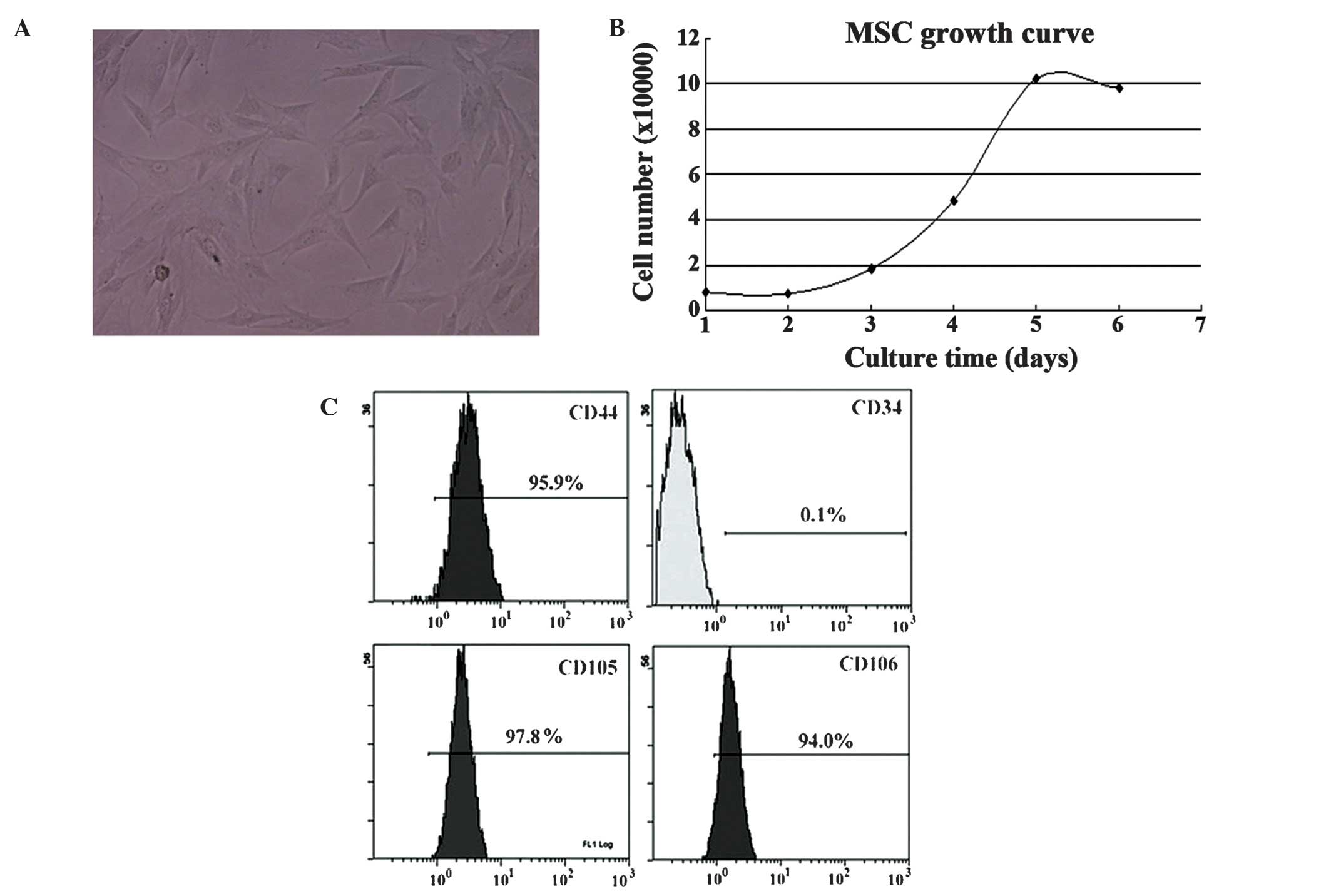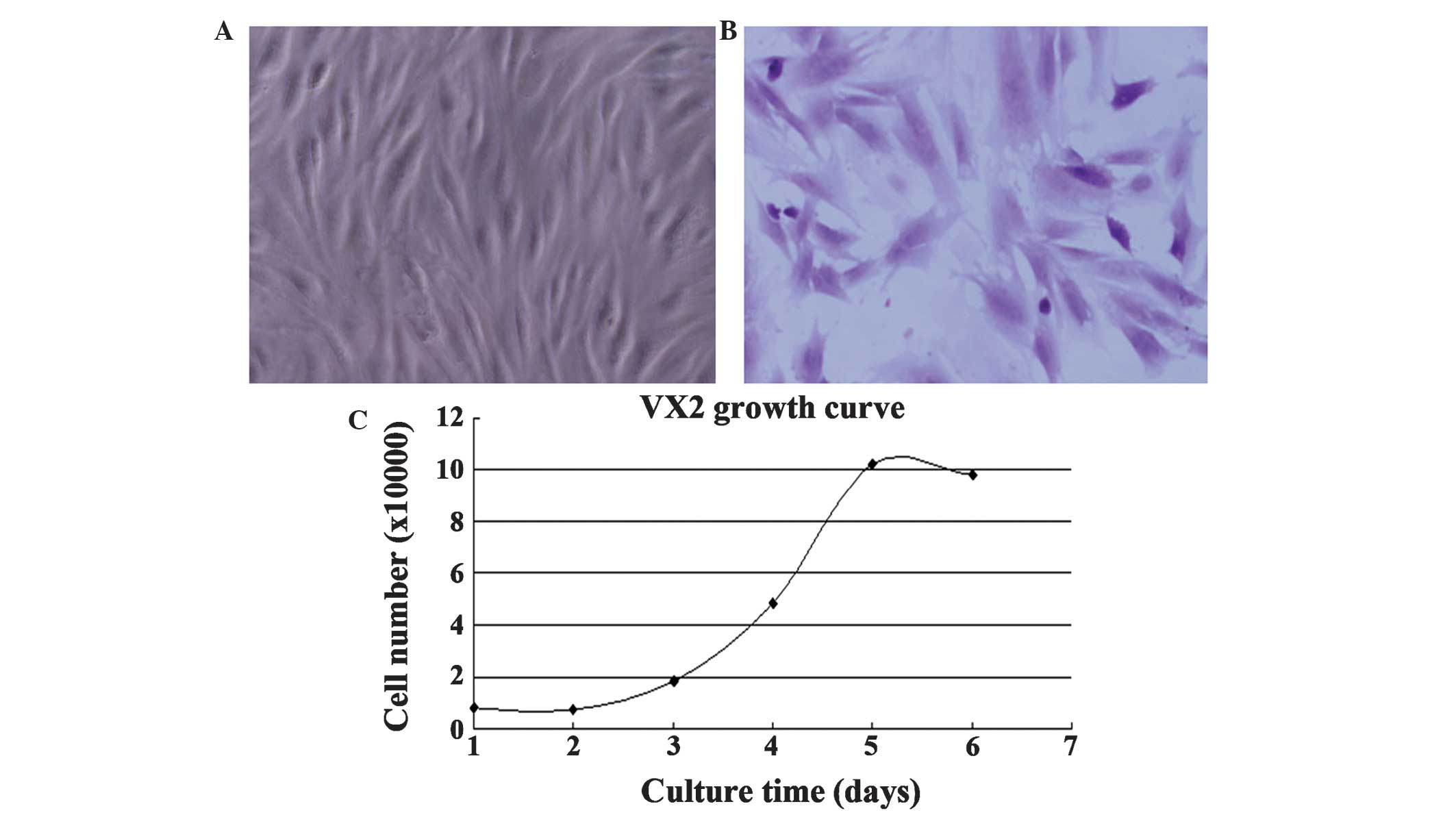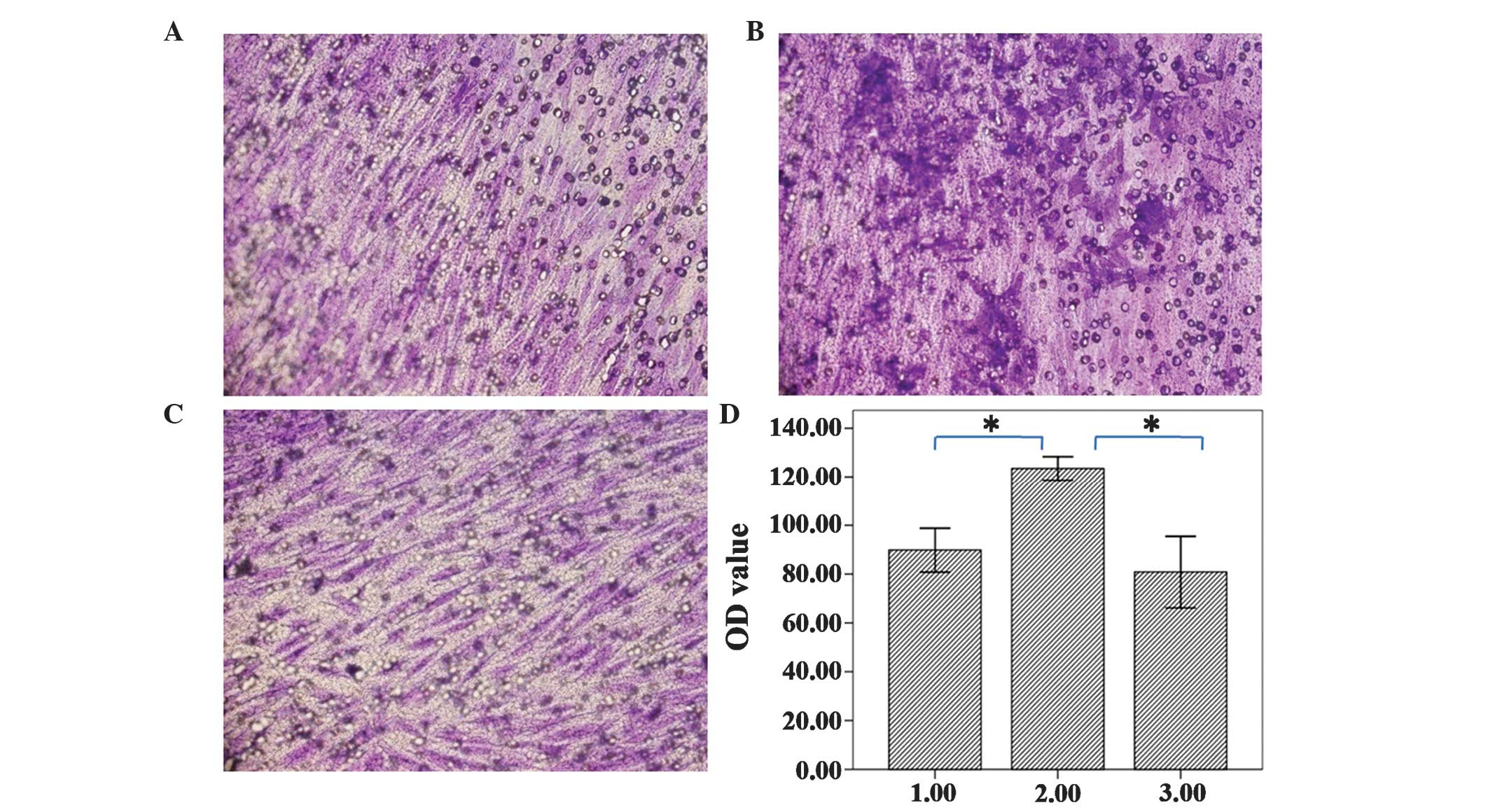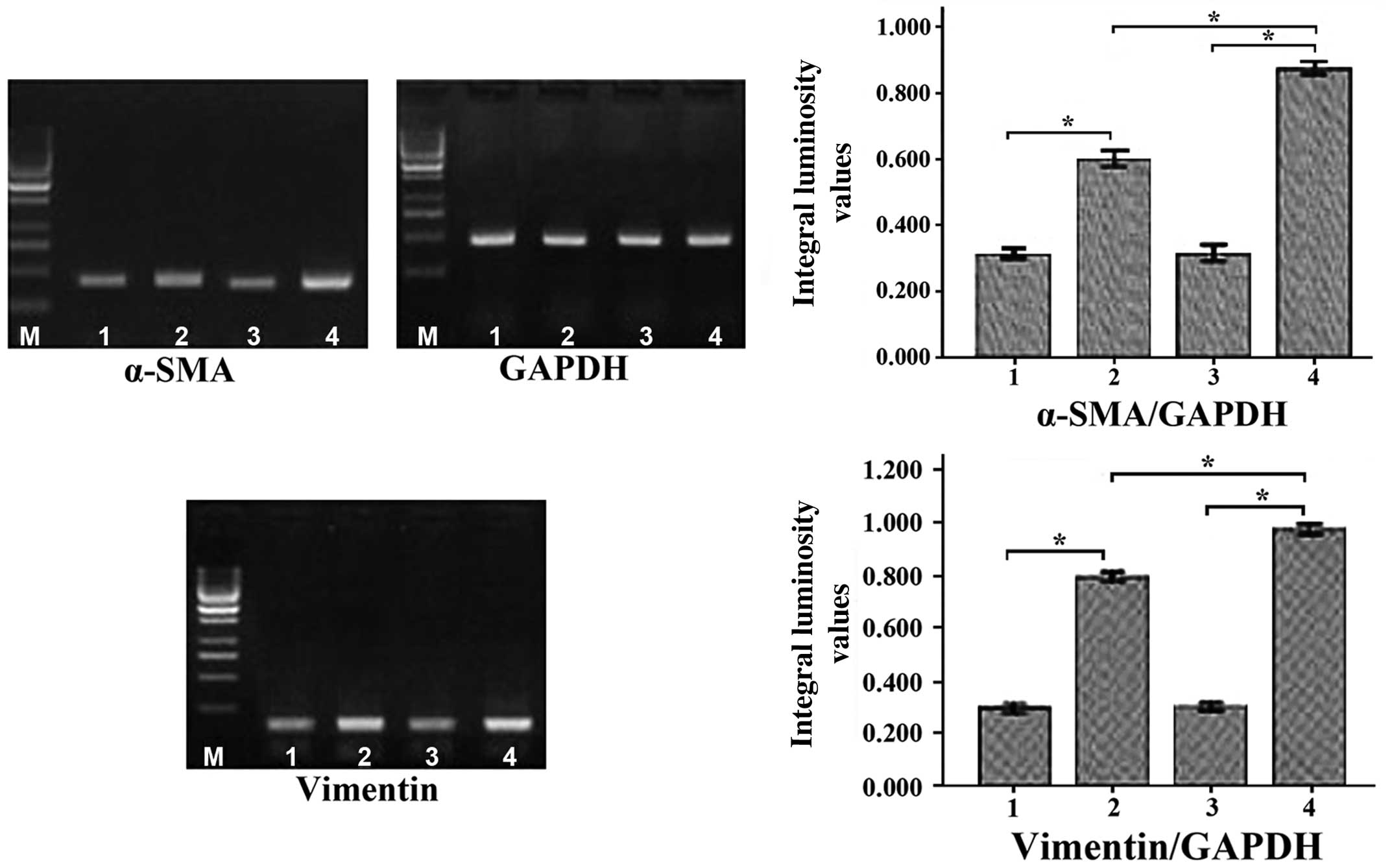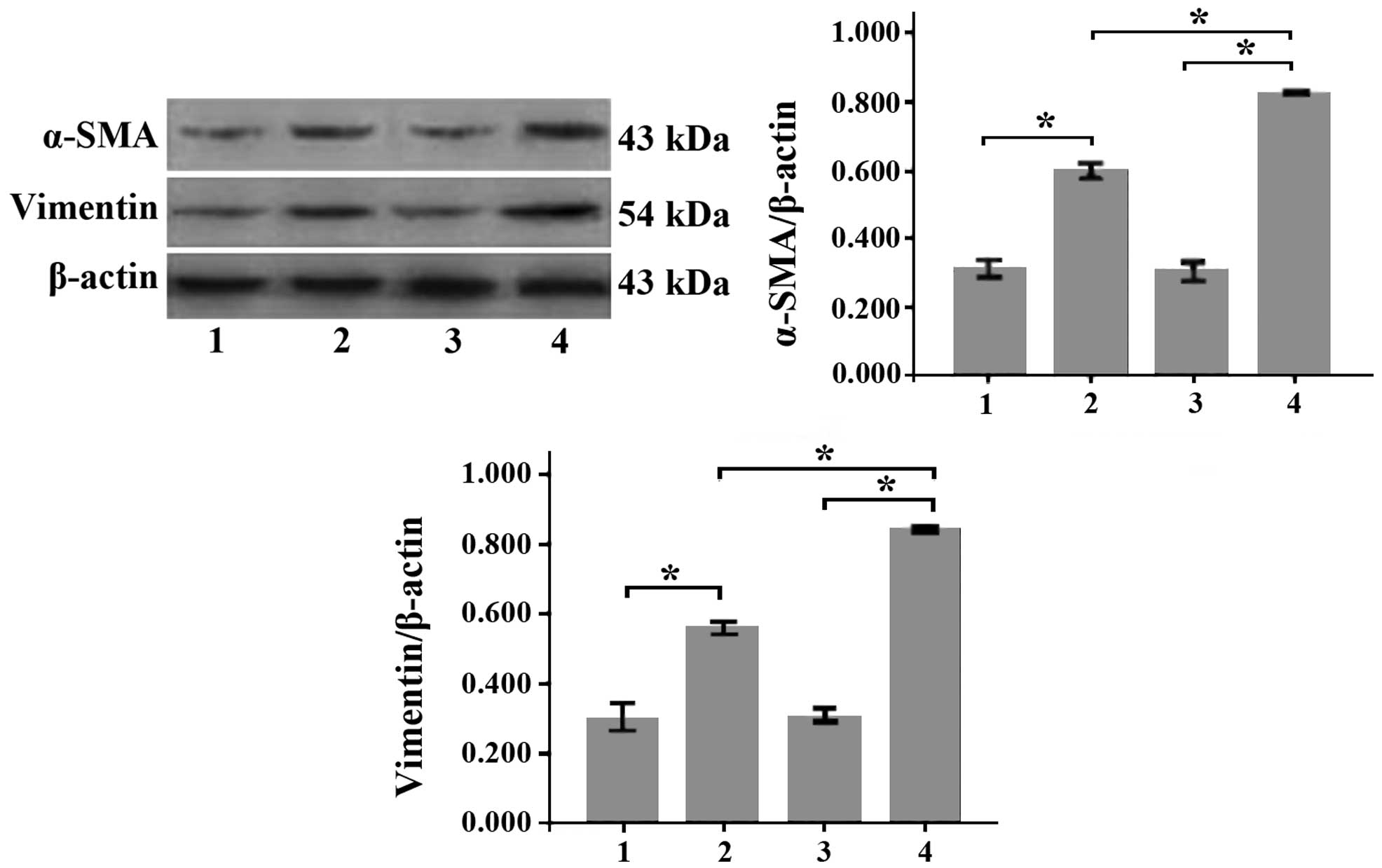|
1
|
Wang XC, Katso R, Butler R, Hanby AM,
Poulsom R, Jones T, Sheer D and Ganesan TS: H-RYK, an unusual
receptor kinase: Isolation and analysis of expression in ovarian
cancer. Mol Med. 2:189–203. 1996.PubMed/NCBI
|
|
2
|
Polanska UM and Orimo A:
Carcinoma-associated fibroblasts: Non-neoplastic tumour-promoting
mesenchymal cells. J Cell Physiol. 228:1651–1657. 2013. View Article : Google Scholar : PubMed/NCBI
|
|
3
|
Fonseca FP, Coletta RD, Azevedo MB, Prado
RAC, Pires SAM, Miyahara GI, Carlos R, Farthing P, Hunter KD,
Speight PM, et al: Stromal myofibroblasts in squamous cell
carcinoma of the tongue in young patients - a multicenter
collaborative study. Oral Surg Oral Med Oral Pathol Oral Radiol.
118:483–489. 2014. View Article : Google Scholar : PubMed/NCBI
|
|
4
|
Mao Y, Keller ET, Garfield DH, Shen K and
Wang J: Stromal cells in tumor microenvironment and breast cancer.
Cancer Metastasis Rev. 32:303–315. 2013. View Article : Google Scholar : PubMed/NCBI
|
|
5
|
Hanahan D and Weinberg RA: Hallmarks of
cancer: The next generation. Cell. 144:646–674. 2011. View Article : Google Scholar : PubMed/NCBI
|
|
6
|
Jezierska-Drutel A, Rosenzweig SA and
Neumann CA: Role of oxidative stress and the microenvironment in
breast cancer development and progression. Adv Cancer Res.
119:107–125. 2013. View Article : Google Scholar : PubMed/NCBI
|
|
7
|
Bianchetti L, Barczyk M, Cardoso J,
Schmidt M, Bellini A and Mattoli S: Extracellular matrix
remodelling properties of human fibrocytes. J Cell Mol Med.
16:483–495. 2012. View Article : Google Scholar : PubMed/NCBI
|
|
8
|
Göritz C, Dias DO, Tomilin N, Barbacid M,
Shupliakov O and Frisén J: A pericyte origin of spinal cord scar
tissue. Science. 333:238–242. 2011. View Article : Google Scholar : PubMed/NCBI
|
|
9
|
Coen M, Gabbiani G and Bochaton-Piallat
ML: Myofibroblast-mediated adventitial remodeling: An
underestimated player in arterial pathology. Arterioscler Thromb
Vasc Biol. 31:2391–2396. 2011. View Article : Google Scholar : PubMed/NCBI
|
|
10
|
Direkze NC, Hodivala-Dilke K, Jeffery R,
Hunt T, Poulsom R, Oukrif D, Alison MR and Wright NA: Bone marrow
contribution to tumor-associated myofibroblasts and fibroblasts.
Cancer Res. 64:8492–8495. 2004. View Article : Google Scholar : PubMed/NCBI
|
|
11
|
Mishra PJ, Mishra PJ, Glod JW and Banerjee
D: Mesenchymal stem cells: Flip side of the coin. Cancer Res.
69:1255–1258. 2009. View Article : Google Scholar : PubMed/NCBI
|
|
12
|
Tschumperlin DJ, Liu F and Tager AM:
Biomechanical regulation of mesenchymal cell function. Curr Opin
Rheumatol. 25:92–100. 2013. View Article : Google Scholar : PubMed/NCBI
|
|
13
|
Prockop DJ: Marrow stromal cells as stem
cells for nonhematopoietic tissues. Science. 276:71–74. 1997.
View Article : Google Scholar : PubMed/NCBI
|
|
14
|
Dominici M, Le Blanc K, Mueller I,
Slaper-Cortenbach I, Marini F, Krause D, Deans R, Keating A,
Prockop Dj and Horwitz E: Minimal criteria for defining multipotent
mesenchymal stromal cells. The International Society for Cellular
Therapy position statement. Cytotherapy. 8:315–317. 2006.
View Article : Google Scholar : PubMed/NCBI
|
|
15
|
Zhao HF, Chen J, Xu ZS and Zhang KQ:
Distribution and differentiation of mesenchymal stem cells in tumor
tissue. Chin Med J (Engl). 122:712–715. 2009.PubMed/NCBI
|
|
16
|
Zhang K, Shi B, Chen J, Zhang D, Zhu Y,
Zhou C, Zhao H, Jiang X and Xu Z: Bone marrow mesenchymal stem
cells induce angiogenesis and promote bladder cancer growth in a
rabbit model. Urol Int. 84:94–99. 2010. View Article : Google Scholar : PubMed/NCBI
|
|
17
|
Zoja C, Garcia PB, Rota C, Conti S,
Gagliardini E, Corna D, Zanchi C, Bigini P, Benigni A, Remuzzi G
and Morigi M: Mesenchymal stem cell therapy promotes renal repair
by limiting glomerular podocyte and progenitor cell dysfunction in
adriamycin-induced nephropathy. Am J Physiol Renal Physiol.
303:F1370–F1381. 2012. View Article : Google Scholar : PubMed/NCBI
|
|
18
|
Brennen WN, Denmeade SR and Isaacs JT:
Mesenchymal stem cells as a vector for the inflammatory prostate
microenvironment. Endocr Relat Cancer. 20:R269–R290. 2013.
View Article : Google Scholar : PubMed/NCBI
|
|
19
|
Rous P, Kidd JG and Smith WE: Experiments
on the cause of the rabbit carcinomas derived from virus-induced
papillomas. II. Loss by the Vx2 carcinoma of the power to immunize
hosts against the papilloma virus. J Exp Med. 96:159–174. 1952.
View Article : Google Scholar : PubMed/NCBI
|
|
20
|
Gabbiani G and Majno G: Dupuytren's
contracture: Fibroblast contraction? An ultrastructural study. Am J
Pathol. 66:131–146. 1972.PubMed/NCBI
|
|
21
|
Angadi PV, Kale AD and Hallikerimath S:
Evaluation of myofibroblasts in oral submucous fibrosis:
correlation with disease severity. J Oral Pathol Med. 40:208–213.
2011. View Article : Google Scholar : PubMed/NCBI
|
|
22
|
Gupta K, Metgud R and Gupta J: Evaluation
of stromal myofibroblasts in oral leukoplakia, oral submucous
fibrosis, and oral squamous cell carcinoma - an immunohistochemical
study. J Cancer Res Ther. 11:893–898. 2015. View Article : Google Scholar : PubMed/NCBI
|
|
23
|
Schmitt-Gräff A, Desmoulière A and
Gabbiani G: Heterogeneity of myofibroblast phenotypic features: An
example of fibroblastic cell plasticity. Virchows Arch. 425:3–24.
1994. View Article : Google Scholar : PubMed/NCBI
|
|
24
|
Saw VP, Schmidt E, Offiah I, Galatowicz G,
Zillikens D, Dart JK, Calder VL and Daniels JT: Profibrotic
phenotype of conjunctival fibroblasts from mucous membrane
pemphigoid. Am J Pathol. 178:187–197. 2011. View Article : Google Scholar : PubMed/NCBI
|
|
25
|
Mayrand D, Laforce-Lavoie A, Larochelle S,
Langlois A, Genest H, Roy M and Moulin VJ: Angiogenic properties of
myofibroblasts isolated from normal human skin wounds.
Angiogenesis. 15:199–212. 2012. View Article : Google Scholar : PubMed/NCBI
|
|
26
|
Lúcio PS, Cavalcanti AL, Alves PM, Godoy
GP and Nonaka CF: Myofibroblasts and their relationship with oral
squamous cell carcinoma. Braz J Otorhinolaryngol. 79:112–118.
2013.(In Portuguese). View Article : Google Scholar : PubMed/NCBI
|
|
27
|
Mertens JC, Fingas CD, Christensen JD,
Smoot RL, Bronk SF, Werneburg NW, Gustafson MP, Dietz AB, Roberts
LR, Sirica AE and Gores GJ: Therapeutic effects of deleting
cancer-associated fibroblasts in cholangiocarcinoma. Cancer Res.
73:897–907. 2013. View Article : Google Scholar : PubMed/NCBI
|
|
28
|
Li H, Fan X and Houghton J: Tumor
microenvironment: The role of the tumor stroma in cancer. J Cell
Biochem. 101:805–815. 2007. View Article : Google Scholar : PubMed/NCBI
|
|
29
|
Wang J, Ying G, Wang J, Jung Y, Lu J, Zhu
J, Pienta KJ and Taichman RS: Characterization of phosphoglycerate
kinase-1 expression of stromal cells derived from tumor
microenvironment in prostate cancer progression. Cancer Res.
70:471–480. 2010. View Article : Google Scholar : PubMed/NCBI
|
|
30
|
Hu M, Peluffo G, Chen H, Gelman R, Schnitt
S and Polyak K: Role of COX-2 in epithelial-stromal cell
interactions and progression of ductal carcinoma in situ of
the breast. Proc Natl Acad Sci USA. 106:3372–3377. 2009. View Article : Google Scholar : PubMed/NCBI
|
|
31
|
Ostman A and Augsten M: Cancer-associated
fibroblasts and tumor growth - bystanders turning into key players.
Curr Opin Genet Dev. 19:67–73. 2009. View Article : Google Scholar : PubMed/NCBI
|
|
32
|
Tuxhorn JA, Ayala GE, Smith MJ, Smith VC,
Dang TD and Rowley DR: Reactive stroma in human prostate cancer:
Induction of myofibroblast phenotype and extracellular matrix
remodeling. Clin Cancer Res. 8:2912–2923. 2002.PubMed/NCBI
|
|
33
|
Lewis MP, Lygoe KA, Nystrom ML, Anderson
WP, Speight PM, Marshall JF and Thomas GJ: Tumor-derived TGF-β1
modulates myofibroblast differentiation and promotes
HGF/SF-dependent invasion of squamous carcinoma cells. Br J Cancer.
90:822–832. 2004. View Article : Google Scholar : PubMed/NCBI
|
|
34
|
Ishii G, Sangai T, Oda T, Aoyagi Y, Hasebe
T, Kanomata N, Endoh Y, Okumura C, Okuhara Y, Magae J, et al:
Bone-marrow-derived myofibroblasts contribute to the cancer-induced
stromal reaction. Biochem Biophys Res Commun. 309:232–240. 2003.
View Article : Google Scholar : PubMed/NCBI
|
|
35
|
Kalluri R and Neilson EG:
Epithelial-mesenchymal transition and its implications for
fibrosis. J Clin Invest. 112:1776–1784. 2003. View Article : Google Scholar : PubMed/NCBI
|
|
36
|
Mishra PJ, Mishra PJ, Humeniuk R, Medina
DJ, Alexe G, Mesirov JP, Ganesan S, Glod JW and Banerjee D:
Carcinoma-associated fibroblast-like differentiation of human
mesenchymal stem cells. Cancer Res. 68:4331–4339. 2008. View Article : Google Scholar : PubMed/NCBI
|
|
37
|
Oktem G, Sercan O, Guven U, Uslu R, Uysal
A, Goksel G, Ayla S and Bilir A: Cancer stem cell differentiation:
TGFβ1 and versican may trigger molecules for the organization of
tumor spheroids. Oncol Rep. 32:641–649. 2014.PubMed/NCBI
|
|
38
|
Jeon ES, Moon HJ, Lee MJ, Song HY, Kim YM,
Cho M, Suh DS, Yoon MS, Chang CL, Jung JS and Kim JH:
Cancer-derived lysophosphatidic acid stimulates differentiation of
human mesenchymal stem cells to myofibroblast-like cells. Stem
Cells. 26:789–797. 2008. View Article : Google Scholar : PubMed/NCBI
|
|
39
|
Ho IA, Yulyana Y, Sia KC, Newman JP, Guo
CM, Hui KM and Lam PY: Matrix metalloproteinase-1-mediated
mesenchymal stem cell tumor tropism is dependent on crosstalk with
stromal derived growth factor 1/C-X-C chemokine receptor 4 axis.
FASEB J. 28:4359–4368. 2014. View Article : Google Scholar : PubMed/NCBI
|
|
40
|
Berger L, Shamai Y, Skorecki KL and
Tzukerman M: Tumor specific recruitment and reprogramming of
mesenchymal stem cells in tumorigenesis. Stem Cells. 34:1011–1026.
2016. View Article : Google Scholar : PubMed/NCBI
|















